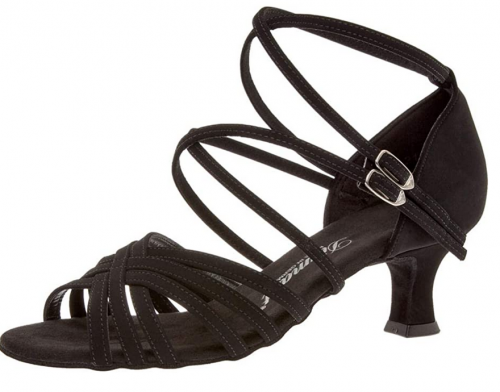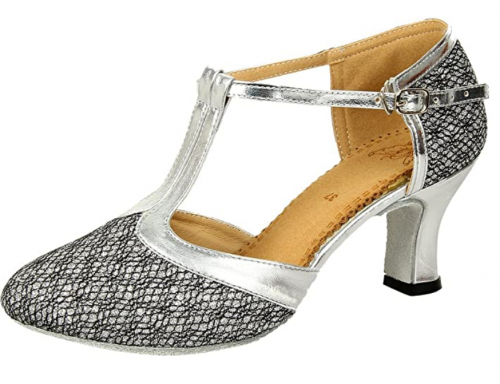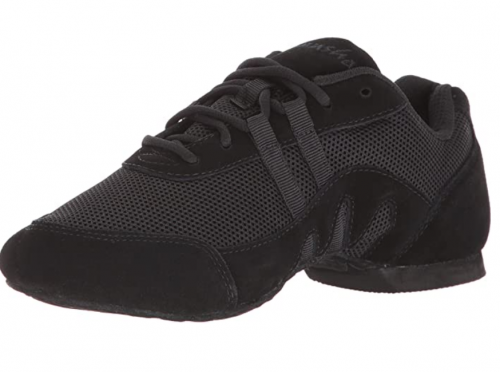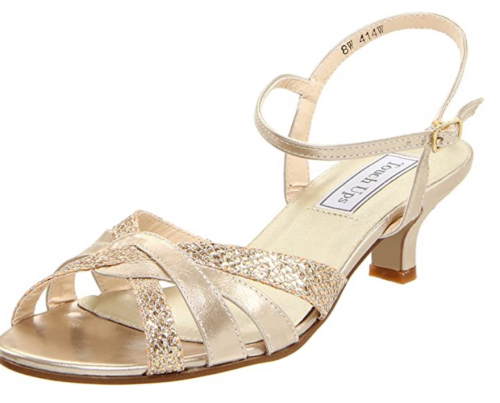Best Salsa Shoes – 2024 Review Guide
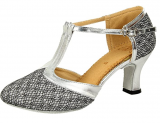
Athletes aren’t only relegated to sneakers, however, and anyone who’s just finished a salsa routine will tell you ballroom can be as high intensity as any other competitive sport.
So when choosing the best salsa dance shoes, you have to be as discerning as any sports coach or competitor.
Whether you’re looking for a suede-soled competition-grade shoe, a comfortable pair of dance sneakers your instructor will allow on a sprung floor, or a simple pair of practice heels you can wear to any respectable competition without breaking the bank, you have to make sure to buy high-quality shoes that will treat you right.
Standout Picks
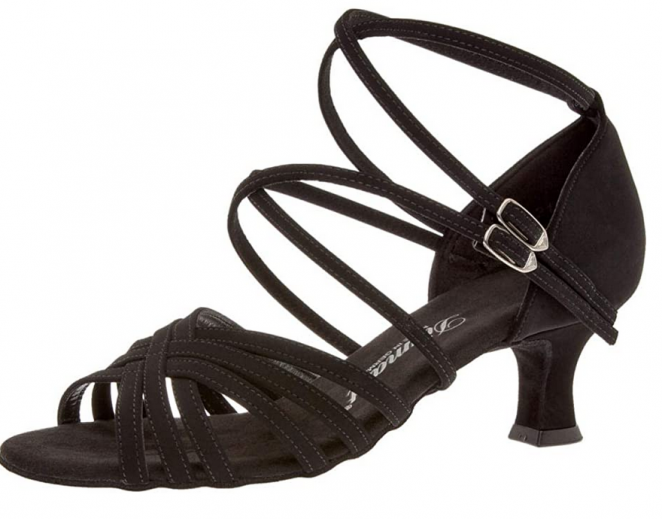
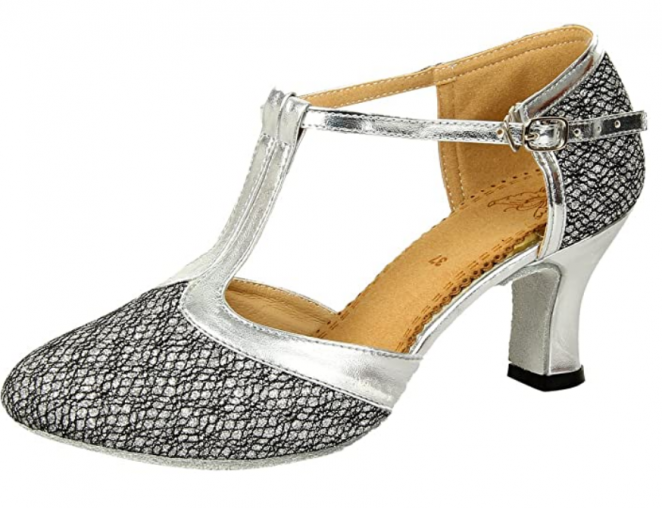
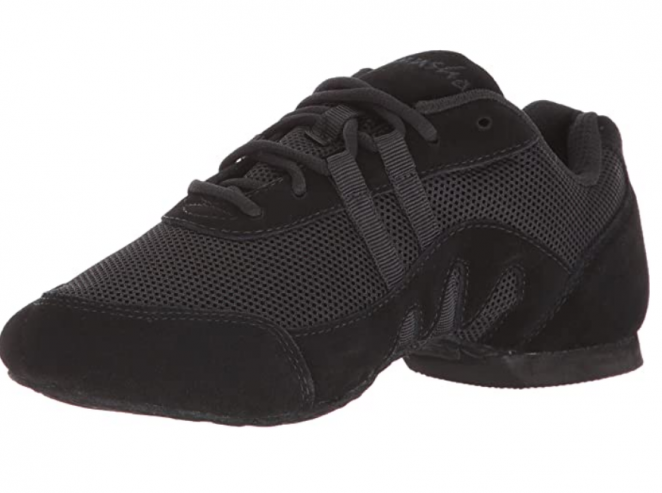




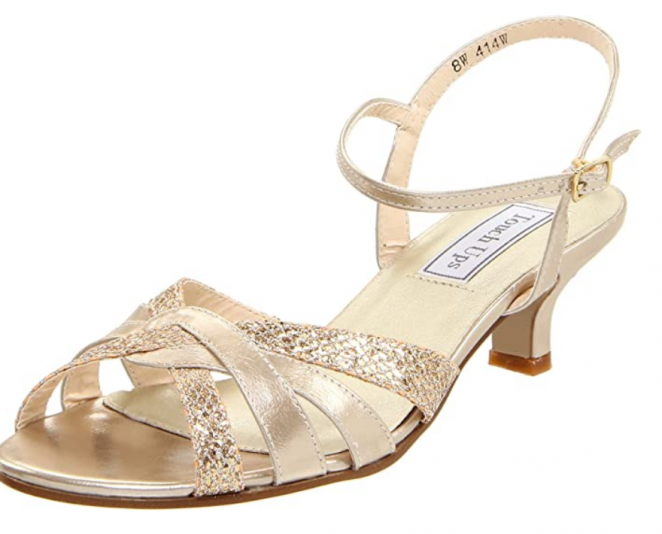
Criteria Used for Evaluation
Outsole
One of the most important aspects of your salsa shoes is the soles. If your shoes have the wrong outsole you will find your dance will greatly suffer.
Don’t misunderstand us here, you can wear any type of shoe to dance in. However, if you want to look like the pros and dancing is not just something you do for fun but something you work hard to improve at, the right shoes will make a huge impact.
Sneakers, dress shoes, loafers, and gym shoes tend to have a rubber or polyurethane outsoles. These are great for traction, grip, and durability but on a dance floor sticking feet can lead to injury when the rest of your body is moving.
These are features that you aren’t going to find in quality Salsa or Latin dance shoes. Let’s take a minute and look at the pros and cons of the most common sole materials.
Leather Benefits
-Good Surface Traction
-Can Score for Extra Traction
-Durable
-Low Maintenance
-Can Wear Outside
Nubuck Benefits
-Good Surface Traction
-Higher Grip
-Superior Slide
-Excellent on Highly Polished Floors
Materials
The most common materials used for salsa shoes are leather and suede leather.
There is also a variety of other soft materials like lambskin and felt, that you may find in your search for superior salsa shoes. The problem with a soft sole is the fact that they are not made to be worn outside, requiring a change of shoes when you get to your dance studio or performance venue.
Most people don’t mind changing their shoes, but if this is a problem for you, you may want to opt for a thicker leather sole.
Overall, either Leather or Nubuck Suede Leather will help make your performance flawless. It is important to note, any shoe can be turned into a dance shoe. There are many good articles out there to describe how to switch the soles of your shoes. Making your favorite sneaker into a dance shoe is not common but it is possible.
Not completely sold that dancing will be your new thing? That’s OK too, you can also buy stick on soft material outsoles for the shoes you already own. This may save you money and give you a bit more time to decide if an investment in dance shoes is a good choice.
Flexibility
Dance enthusiasts everywhere will tell you that the flexibility of your dance shoe will make or break your dance.
One of the most common critiques about dancers is their feet. Toes that aren’t pointed or a kick that ends with a clubfoot is sure to lose points with the judges. Stiff shoes don’t move with your feet and can inhibit your ability to point your toes and fully flex your ankle.
The difficulty in finding the perfect flexibility is the fact that you can’t sacrifice all of the support of your shoe or you are certain to have pain in your joints and muscles and you could even injure yourself. Salsa shoes are structured to offer top levels of flexibility and provide enough support to keep you moving and feeling great.
The other pieces of your salsa shoes play their part in overall flexibility as well. Taking the time to look at the upper material and knowing that soft bends much easier than stiff, will help keep your shoes moving with you.
It is also essential to note, if you have problems with your feet, talk about it with your instructor or doctor before spending a lot of money on salsa shoes. You want to make sure to get the support and structure you need to avoid injury.
Heel
This stability and support are crucial.
Women’s dance shoes that have a heel have a shank that runs from the heel through the arch of the shoe.
There are different materials used such as metal, vinyl, polyurethane, and plastic. Supporting your arch is needed to keep your feet feeling good and maintaining joint health.
All women’s salsa shoes with a heel will have some sort of shank in them. How stiff you buy your shoes is up to you, keep in mind that flexibility leads to excellent kicks and flicks and less time hearing about your toes not being pointed enough.
Men’s dance shoes can be found with or without a shank. No shank means you will be able to point your toes easier and better than before but your shoe will not hold its shape nearly as well or as long. The lack of shank in men’s salsa shoes also leads to cracking leather.
Typically seen in the toe and heel, a loss of structure weakens the shoe overall. When you are beginning this is a decision best left for later. More experienced dancers or people with foot problems will want to think about it sooner and discuss it with your instructor.
A higher score on this metric means that the heel will better support your dance, whether you are a man or a woman.
Durability
To assess each of the products on our list for durability, we not only read through thousands of customer reviews on our recommended products, but we also looked for some of the hallmarks of quality construction.
From brand name reputation to their initial smell out of the box, there are a few ways of identifying a well-built, made-to-last product.
The Details
A zipper that doesn’t zip or snaps? Poor threading technique? A smelly, chemical residue on the shoe when you open the box? All these details were looked for and evaluated when assigning a score for durability.
Materials
Certain materials last longer than others, even if that comes at the expense of a higher score in the “comfort” criterion. Materials that are synthetic, thicker and firmer tend to score higher on durability.
Product Purpose
A shoe made for running and high-impact sports will not likely last as long as a good pair of general activity shoes and that’s okay. Being aware of the shoe’s purpose is critical for you as a reader and for us as a reviewer.
Although shoes that will last longer score higher on this criterion, you might also see high scores to shoes with more limited durability, if that product was specifically designed for certain purposes that involve high-impact and high-stress motions.
We take into account the type of shoes you are trying to purchase when assigning scores to shoes in this criterion.
Brand Name
A product is a promise made, but a brand is a promise kept. A brand name is often a signal of quality and consistency in construction and durability from product to product.
Although there are always exceptions to this rule, quite often brands that perform continue to perform. Brand names on our list tend to score higher in the durability score.
10 Best Salsa Dance Shoes Reviews
1. Diamant 108-064-040
Handcrafted in Germany, this model by Diamant provides exceptional quality, comfort and durability, and is the perfect combination of classic and flashy. It uses an incredibly efficient push-button closure that allows the perfectly snug fit, plus easy on and off that won’t take up time before your next class or performance.
The upper uses quality synthetic nubuck from Italy, combining it with a mesh that is breathable and conforms to the shape of the foot without requiring too much breaking in.
The sole of this Diamant shoe uses suede, which is one of the best materials for ballroom dancers, seeing that it provides the right amount of traction on highly polished surfaces, but won’t stick to the floor. This means that the likelihood of getting injured is considerably lower than with rubber outsoles, plus you will enjoy the benefit of greater flexibility.
The lining is antimicrobial and moisture-wicking, taking into consideration the amount of physical effort that dancers put into their training, while the 2” flared heel provides just the right amount of elevation, with great stability.
The price is higher than the average Latin ballroom shoe, but if you’re after something you’ll be using for years, this model is definitely highly recommended.
2. Honeystore Mary Jane
This option is some of the most balanced on our list of dancing heels for salsa. These shoes have suitable 2.5” heels, a secure T-strap and most of all high-quality suede soles, but lack the traditional strappy style and glamour of most Latin shoes.
Nevertheless, Mary Jane shoes come in a variety of styles and are the first properly soled heeled shoes on our list and could be an excellent choice for a competition night.
Not only are the heels the right height for salsa, the subtle flare, and relatively blocky bottom will provide greater stability without sacrificing the style. The first heeled sandals here with the suitable slippy sole that will provide the amount of slip versus grip a competition salsa dancer will need.
The balance between style and function in these shoes raises the price point a little, among the top three most expensive shoes on the list, especially once you only consider the shoes you could wear in competition.
These shoes have also been reported to degrade quickly, so you may not get as many uses out of them as a more robust pair not designed specifically for dancing.
3. Sansha Salsette 3
The Jazz sneaker is the first official dance shoe on our list, and it ticks all the boxes. With a half-inch heel, suede in the sole and body of the shoe, and a high-quality arch support that will carry you through each practice, its a strong all-round training shoe for any latin dancer.
There’s no replacing a high-quality suede sole for Latin dancing if you’re willing to shell out for a formal dance shoe. Even though this sneaker will be relegated to the training floor, the suede shoe will completely free the dancer from knee and hip strain after hours in the studio.
The strong support and form-fitting style of these comfortable salsa shoes will completely spoil you for the transfer into the more glamorous competition shoes on dance nights. With a short heel, the arch support will create an incredibly comfortable shoe that facilitates jumps and footwork across the dance floor.
These shoes ring in as a little more expensive than some of the cheaper shoes on our list, in return for being specially designed for ballroom dance and the kind of movement that salsa will demand from you.
High-quality material and design both come together to raise the price point, though, of the dance sneakers on our list, these are by far the cheapest and best value for money.
4. Capezio SD103
This entry level men’s model is perfect for those just starting out with ballroom dancing. Lightweight and soft, it’s a great pair of footwear for the studio or stage, and has a classic look with a 1” heel that’s a good start before moving on to more specialized Latin heels (which are often 2” high even for men).
The upper is made with soft synthetic leather that will allow for a comfortable fit which is easily adjusted through the classic lacing system.
This model is lined with moisture-wicking textile which will prevent odors inside these best Latin dance shoes, and an Achilles notch protects the back of your heel from rubbing and blistering. In terms of shock absorption, you get a padded insole that won’t allow for fatigue and joint pain.
Both the forefoot and heel have a suede outsole that provides excellent traction, and the ¾ shank allows for the perfect amount of stability and flexibility. The heel is made with EVA foam, which is soft yet stable, while the price of this model is slightly lower than average, making it a great overall choice (especially for beginners).
5. Ellie Lucille
The flared block heel on this dress pump will give a level of comfort and control even to new dancers, and the smooth synthetic sole will award a strong level of slip to the wearer. The closed-toe, black satin style is a little understated for a lot of Latin styles but the comfort and quality balance out, especially for a dancer getting a start in salsa and looking for a secure, well-received shoe.
With a slightly padded leather insole, and a short 2” flared block heel, the Lucille pump boasts a very high comfort level, even for those reporting dancing repeatedly through an evening. The satin t-strap holding the shoe in place just tops off an already comfortable and secure shoe.
The Lucille Dress pump, with its high comfort levels, has been said to have excellent for use on the competitive scene and for home use, at weddings and other social events. Opting for the synthetic sole instead of a suede or leather version greatly increases the versatility of the shoe.
These Ellie shoe pumps are highest rated for comfort and one of the cheapest on our list. The low cost puts it below some of the formal dance shoes compared here, so the value is weighed against the subdued style and the lack of proper suede soles.
6. Capezio Jr. Footlight
This model is definitely worth checking out for all dance parents looking for a quality, comfortable character, ballroom or even tap shoes. The Jr. Footlight by Capezio has thousands of satisfied customers, comes in two simple colors (black and nude) and is cut and designed to allow maximum comfort for still growing feet.
The 1.5” heel is just the right height for children, and it even comes in three widths to accommodate all foot shapes.
The upper of the Footlight is made with PU leather, but on the inside, it’s lined with moisture-wicking microfiber that won’t allow for bacterial and fungal overgrowth. The entire footbed is padded with foam, including the arch area, so you can expect a good amount of shock absorption, as well as comfort during long classes and rehearsals.
As for fit, the adjustable ankle strap ensures a secure fit, while an Achilles notch protects the back of the heel, and prevents slipping inside the shoe itself.
These salsa dancing shoes for women are made with a leather outsole that will work well on all types of surfaces and is quite durable, so you can rest assured you’ll get plenty of use out of it. As for the price point, it’s average compared to other models listed.
7. Naturalizer Danya
Bringing a level of glamour and style to the list, the Danya dress sandal is a popular day-to-day sandal that could very well suit a salsa dance floor. The strappy front and blocky heel provide stability, and its available in a collection of different colors to suit that glamorous salsa dress.
Naturalizer specialize in good looking, flashy shoes that will definitely draw an appreciative eye on the dance floor. The style is backed up with a comfortable leather insole and a slight platform to make the heel more manageable, so the flashiness doesn’t outweigh the function of these salsa dancing shoes for women.
Designed for all-night comfort in this heeled sandal, the cushioned insole will also provide the support and bounce needed for you in a busy salsa routine. It also allows for breaking in, molding the shoe around your foot and dance needs the more you practice in them.
Naturalizer brand name comes with a slightly higher price than the other heeled sandals featured here, but that name brings a comforting promise and a large customer base to lay your trust on.
8. Touch Ups Jane
A simple and low sandal that is popular with customers looking for both day to day and dancewear shoes. These heeled sandals have a secure ankle strap, comfortable insole padding, and an understated but relatively thick heel.
These shoes could be strong contenders for someone who doesn’t want to pay for a pair of shoes that disappear into the closet for 90% of the week, but who still need comfort and support on salsa nights.
Traditional strappy shoes will always look in-place on a salsa dance floor, and these shoes show a suitable amount of foot without sacrificing support, a buckled ankle strap and x-straps from the arch securing the shoe comfortably.
These are shoes designed to support not just dancers, but people wearing them for hours on end without pause. The insoles are clearly well made and the cushioned style will give a dancer the support they need for a full night of competition dances.
These shoes aren’t charging for dance-oriented design, putting them as among the cheaper options on the list. However, the shoe does have a synthetic non-slip sole that is going to be less comfortable for someone looking for serious salsa spin routines.













